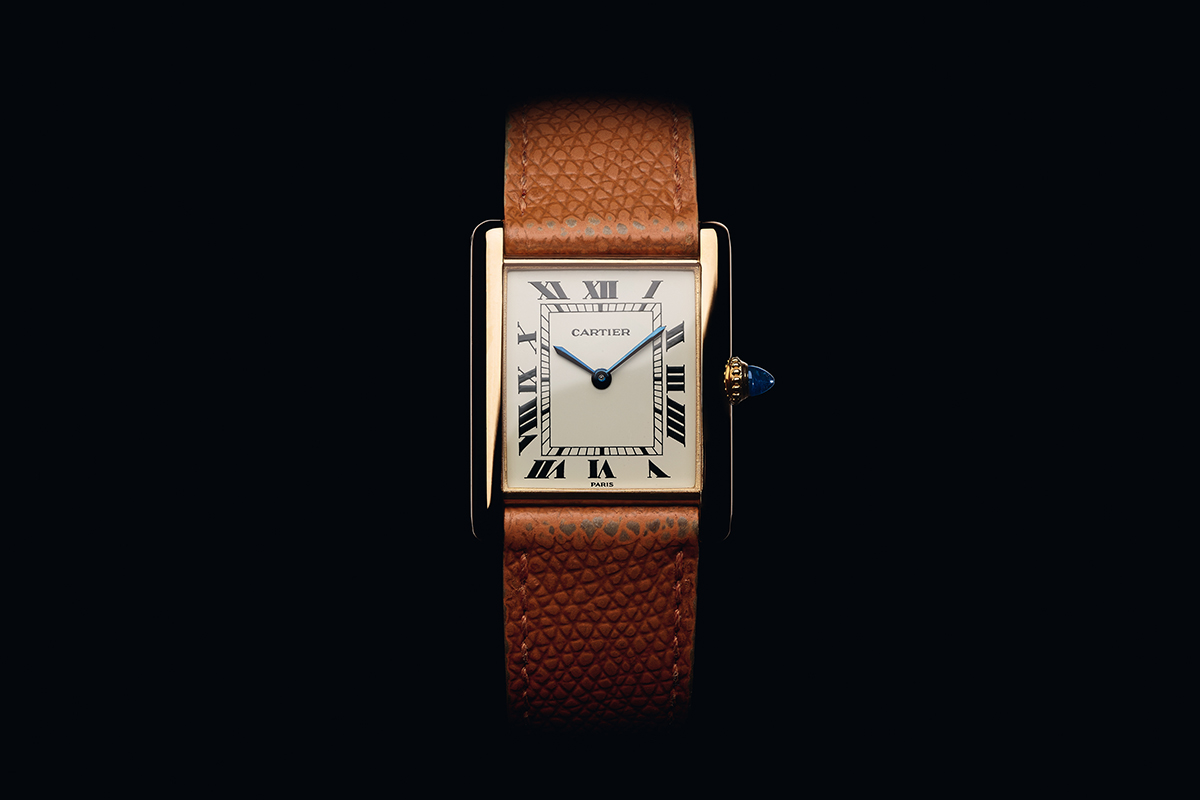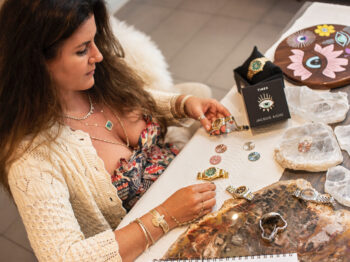The Russian Revolution took place in 1917 and saw Lenin take power. An equally important milestone, in the history of watchmaking at least, took place the same year with the launch of the Tank designed by Louis Cartier. A century has gone by but this legendary watch hasn’t aged a day.
Cartier was flourishing in 1904 as it put its stamp on art deco jewellery and introduced its first wristwatch. A decade later, the First World War was in full swing with a convoy of utility vehicles, stretchers and tanks that undoubtedly inspired the Tank in 1917. Nothing was left to chance with this watch that broke every rule in watchmaking at the time by dropping the round case. The years go by but its popularity hasn’t diminished with its “track” dial that subtly bears the double minute track and “shafts”, two vertical bars incorporating the strap’s lugs into the case without looking out of place. From the cult Tank launched by Louis Cartier in 1922 to the Tank Américaine that was designed in 1987 but launched 2 years later and, of course, 1996’s Tank Française, this timeless watch has embodied its very own style over the years.
Cartier in Motion by Norman Foster
Eight months before reopening the new design museum in
London, Norman Foster was asked to redevelop the former 1962 Commonwealth Institute. What started as two Cartier watches requested for the museum’s permanent collection turned into an entire retrospective commissioned by the eminent English architect who was knighted by the Queen in 1999 to become Lord Foster of Thames Bank. From designing Hong Kong Airport and the HSBC building that marked a turning point in his career to creating the self-sufficient Apple HQ in London, he’s a master of matter and form. Learning about Cartier, a brand he knew little about, was a lightbulb moment. Norman Foster visited the factory several times to soak up the culture and the brand. He’s fascinated by the hands and, like Louis Cartier, Gustave Eiffel and Albert Santos-Dumont, Lord Foster is obsessed with clean lines. He presents Cartier in Motion, a touring exhibition that is a playful exploration of key moments in the life of the 100 year old Tank. From the reconstruction of an Eiffel Tower and the Santos plane to a look back at different Tank models, Norman Foster shows that Paris’ evolution in terms of shapes and the urban layouts has inspired the shape of Cartier’s cases. Over two hundred pieces are presented in display cases including everyday interwar items designed and made by Cartier. If the most impressive thing isn’t the timeline depicting the Tank’s history and evolution in terms of discoveries that have affected the last century then it’s probably the 16 mysterious clocks that Cartier alone knew the secrets behind and whose production grabs your attention.
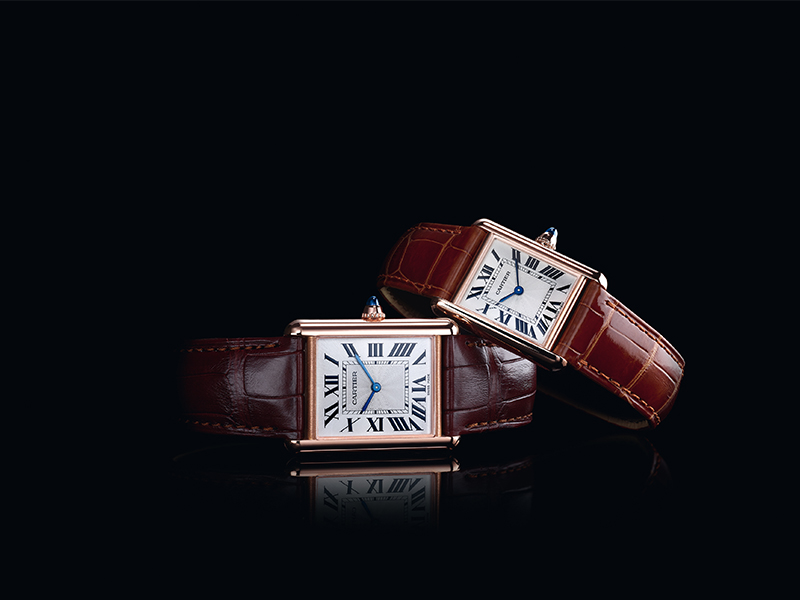
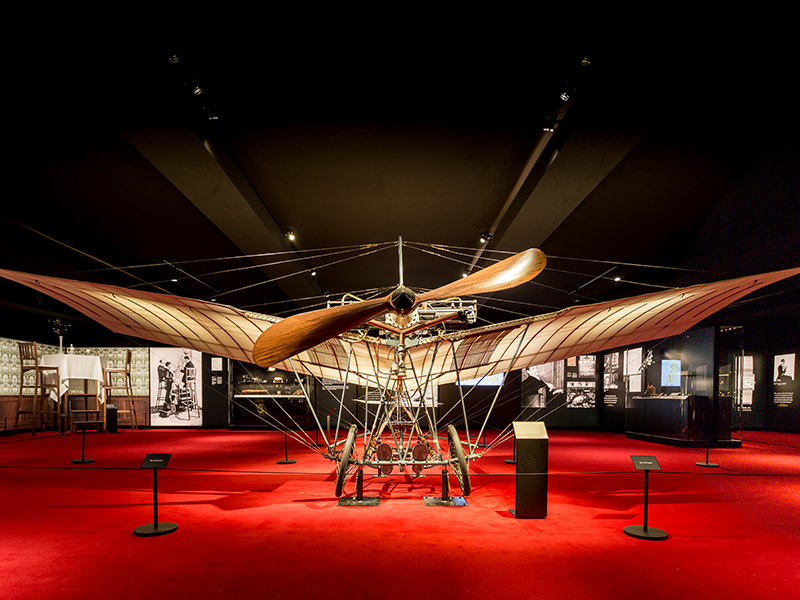
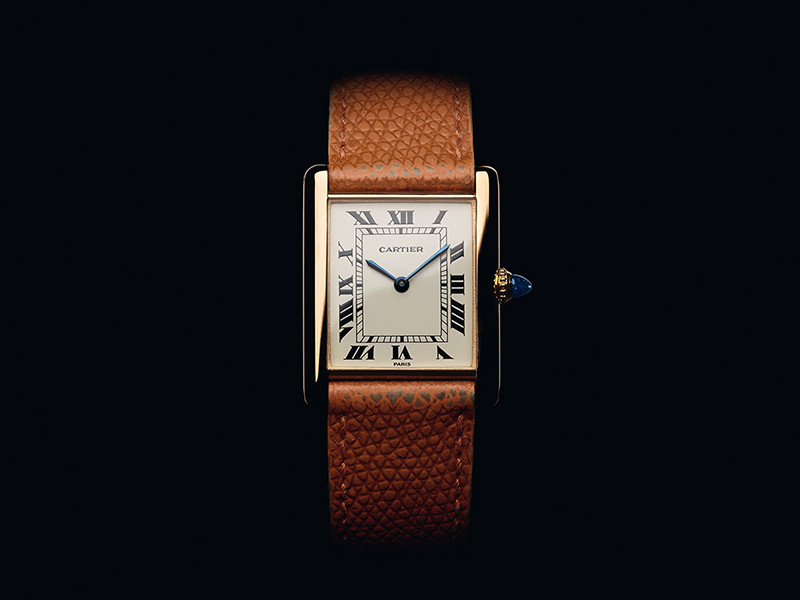
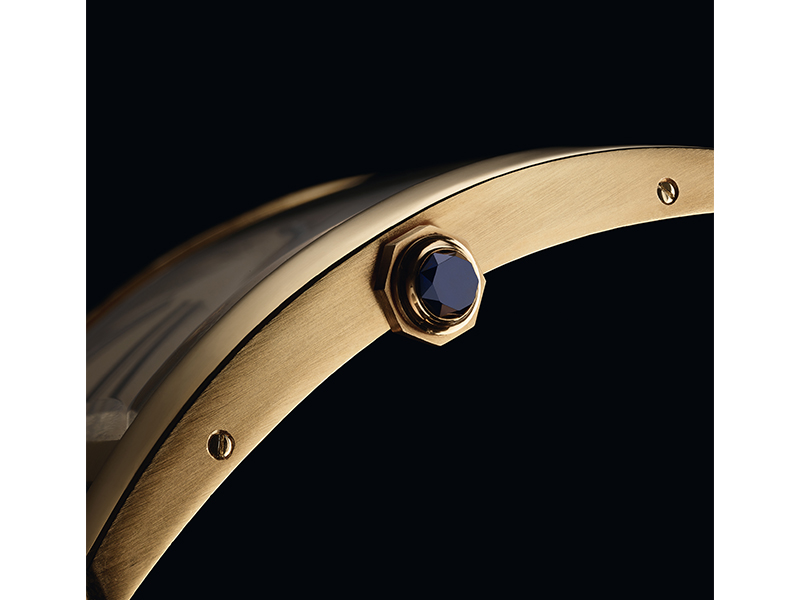
A rich legacy
Pascale Lepeu has curated the Cartier collection for over 24 years and discusses the subject with starry eyes. As the exhibition’s curator, she says that, “these are precious, absolutely fabulous pieces made with scrupulous sophistication that reflects the artisan’s pride in pushing boundaries by striving to expand and improve their technique. A small enamel clock to me is even rarer and more precious than a beautiful necklace.”
According to Pascale Lepeu, one of the reasons they could design an exhibition like this in under 8 months is solely because of Cartier’s incredible legacy as the brand hasn’t just kept all its archives; it’s digitalised them too. “The more documents we had, the less we worried about fakes and the more the pieces’ value increased,” says the guardian of Cartier’s temple. Being in charge of a collection like Cartier’s involves painstaking yet educational work as you have to research and categorise new things every day. “There’s no such thing as a typical day,” says Pascale Lepeu, “It can as easily take six months as two years for an exhibition or to research a piece. We host archive and factory tours as well as visits by people such as experts and exhibition curators. Naturally, managing and maintaining the Cartier collection is a daily task that we undertake with the utmost passion.” The research involved in locating a piece as well as the logistics to ship it is usually the most complex part.
When we ask this knowledgeable woman working behind the scenes what her biggest challenge is, she instantly replies: “Maintaining the pieces! We need to constantly take care of this legacy that’s so unique and that involves everything from restoration and maintenance to transport.” Seeing these items, jewellery and watches come to life or come back to life is what she likes best! “They’re small objets d’art that encapsulate the history of our brand, decorative arts and the lives of people, namely women. Clothes kept up with trends, watches adapted to this evolution before technological progress enabled watchmaking to diversify. The Tank is a great example, time has flown by despite it being almost a century old,” she says.
The Tank is 100 years of iconic models and icons: from Madonna and Brad Pitt to Yves Saint Laurent and Patti Smith. To mark the start of a new more elegant and simplified style, Kim Kardashian treated herself to a Tank at an auction in June that once belonged to the legendary Jacqueline Kennedy Onassis. She was one of the first women to wear a Tank in 1960 as it was originally designed for men. Will Kim K. a.k.a. the new Jackie O. make wearing the Tank in 2017 a sign of the times?

